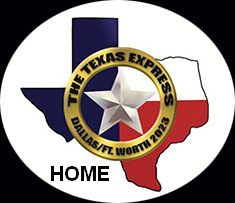Mark Juett has been involved in model railroading for over 50 years. Like most it started with a train set. His was a Lionel set at Christmas that grew each year. His older cousin Jimmy was a huge influence in Mark’s model railroading.
Much of the intrigue of model trains was the mechanical and electrical (and later electronic) control. This interest in things mechanical and electronic led to an Associate Degree in Electronic Engineering Technology, later a BS in Ag Engineering. Mark practiced engineering only two years before being thrusted into management, He holds an MBA from Rockhurst University.
Mark has years of experience in hand laying track, custom made switches and crossings and other specialized track that is not available commercially. He built one of the first command control systems from components when Keith Gutierrez introduced the CTC-16 in the late 1970’s. Later Mark converted to DCC in 2003. He has written the monthly column the Pulse of DCC in the NMRA Magazine since its inception in May 2014. In addition, he was a DCC Conformance Tester for the NMRA. Later Mark was the manager of the NMRA DCC Working Group. He also was an early adopter of Dr. Bruce Chubb’s Computer Model Railroad Interface.
He also has considerable experience in detailing locos and rolling stock, custom painting and weathering as well as scratch building of structures in styrene, wood, plaster and brass. Mark has reworked older locos for clients to make them run better and installed DCC decoders for others. Mark has also shared his experience with others through clinics and presentations at NMRA Division, Regional and National meets. He served as Clinic Chairman for the NMRA 2018 National Convention in Kansas City.
After years in the corporate world and nearly a decade running his own fire and water restoration business his friend Miles Hale gave him an opportunity to pursue one of his great passions, as Miles and Fran were wanting to transition into retirement. Mark’s company builds and maintains custom model railroads, does other custom model railroad work in addition to construction of model railroad space.
Mark is MMR 660 and currently holds the following National Model Railroad Association Achievement Program certificates; Engineer Electrical, Engineer Civil, Model Railroad Author, Master Builder Scenery, Chief Dispatcher, Association Volunteer, Master Builder Structures and Master Builder Cars.
CLINIC #1 of 2 - Planning and Wiring for DCC
Wiring for DCC is different than wiring for DC. We can get rid of all those blocks and toggle switch wiring but with several locos running at once we have a lot more current draw. We need beefier wiring to prevent voltage drop at the far end. We still may need multiple blocks and power districts, circuit breakers and more equipment.
If we plan to have a signal system we will need many blocks and detectors. Learn how to calculate current draw and voltage drop, how to adequately size wiring, solder feeders to the rails that are undetectable even before weathering. Build your own snubber circuits, Learn about twisted bus for reducing interference. Learn about some of the current circuit breakers, block detectors, boosters, auto reversers and other products on the market today. Learn how to wire your staging yards so that only one set of locomotives are running at a time (saving on the noise). Learn how to plan and wire blocks for signaling. A portion of this information went into NMRA TN-9 of which I was the main author, this clinic provides even more information.
CLINIC #2 of 2 - Interchange Staging
Model railroads, like the prototype need to connect to other railroads for more economic prosperity. Prototype railroads interchange cars and loads with many other railroads. Cars and loads should go “beyond the basement”. If you model an earlier time the number of railroads with which you interchange may be many more. Look at some examples of live interchanges that don’t require a lot of space or labor to operate. Cars leave the railroad for long periods of time. New cars come in their place. The methods are easy, and only require basic carpentry skills. Car Cards, JMRI Operations or several other systems can be used to track and move cars.
|
|




